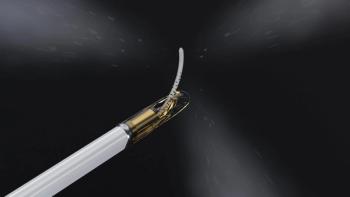
Add Ultrasound or Tomosynthesis to Mammography For More Detection
Adding ultrasound and/or tomosynthesis to digital mammography increases cancer detection.
Adding ultrasound (US) or digital breast tomosynthesis (DBT), or both, to digital mammography (DM) can increase rate of cancer detection not seen on conventional DM, according to a study published
Researchers from Spain performed a retrospective study to assess the diagnostic performance of DM and the different combinations of additional US and DBT.
A 1,042-patient sample was used for the study. All patients had undergone DM, US, and DBT imaging. A total of 84 patients had histologically proven malignant lesions and 258 patients had benign lesions; 700 patients had normal findings or benign lesions without biopsy confirmation.
The results showed that the sensitivity and specificity of DM alone were 69.05% and 88.20%, respectively. With addition of DBT, there was a significant increase in the AUC of DM. This was also found with addition of US, as well as adding both US and DM. However, there were no significant differences seen between DM plus DBT and DM plus US.
“Additional US is a widespread used and well tolerated technique,” the authors wrote. “US can be used as a problem-solving technique after DM or magnetic resonance imaging, because it can offer information about the features of a lesion (solid-cystic differentiation, suspicious signs, and so on) and it is very useful for guiding interventional procedures.”
Newsletter
Stay at the forefront of radiology with the Diagnostic Imaging newsletter, delivering the latest news, clinical insights, and imaging advancements for today’s radiologists.




























